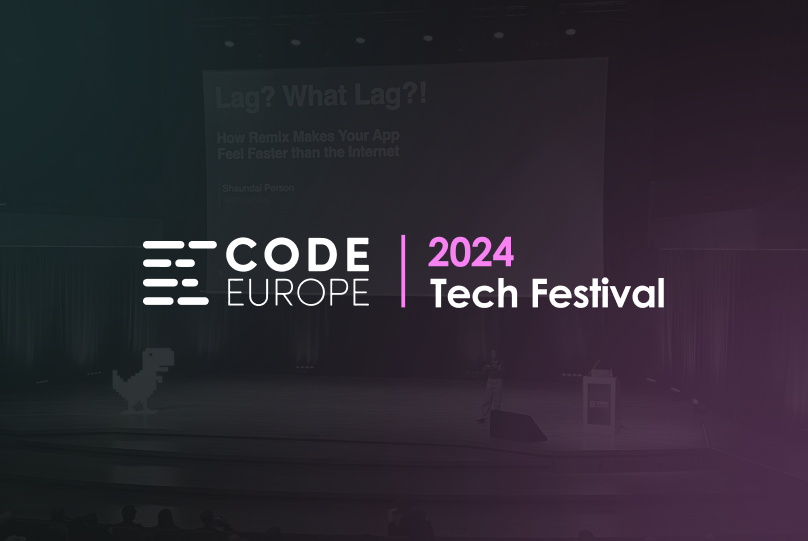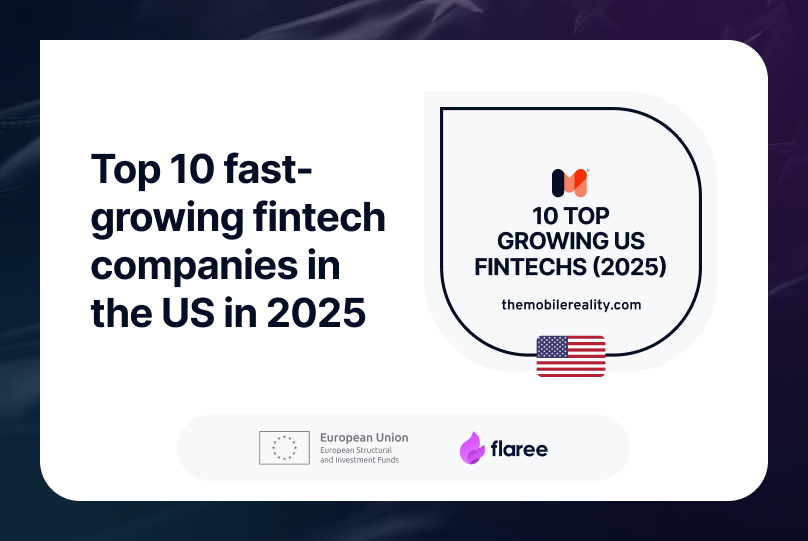Introduction
The CODE EUROPE 2024 conference in Cracow brought together some of the brightest minds in the tech industry to share their insights and innovations. Our Frontend Developer, Przemek Saja, attended the two-day event and participated in several sessions covering a wide range of topics, from full-stack testing and edge computing to AI advancements and outage management. This blog post highlights the key takeaways from each session, providing valuable insights into the latest trends and best practices in software development and technology. Join us as we dive into the cutting-edge knowledge and practical applications shared at CODE EUROPE 2024.
Day 1
Session 1: Fullstack Testing in Action: A Deep Dive into Visual and Mobile Testing with BackstopJS and BrowserStack
The first session of the conference provided an in-depth review of two crucial areas of testing: visual testing with BackstopJS and mobile testing using BrowserStack. Bartosz emphasized the advantages of the Shift Left Model over the Traditional Quality Model, highlighting the importance of performance, security, and accessibility testing in full-stack development. Attendees learned how to implement a mobile testing strategy using cloud web and mobile testing platforms like BrowserStack, integrated with the Apium framework.
A standout moment was an interactive game where participants had to spot differences between two nearly identical web application screens, demonstrating how easily details can be missed without thorough visual and mobile testing. This session underscored the critical role of these testing techniques in maintaining software quality.
Session 2: Lag? What Lag?! How Remix Makes Your App Feel Faster than the Internet
In this session, Shaundai explored why users enjoy interacting with Remix applications, using Netflix as a prime example. Both client-side and server-side rendered pages loaded almost instantaneously, allowing users to quickly access and interact with key parts of the app. The secret to this efficiency lies in Remix's unique data fetching strategy and built-in rendering optimizations.
Shaundai highlighted how Remix efficiently loads only the necessary data and components, minimizing re-renders and ensuring a fast, interactive user experience. This approach not only enables quick initial loads and smooth navigation but also enhances the developer experience by simplifying the creation of high-performance applications.
Session 3: Exploring Azure OpenAI for Responsible AI and Generative Models
During this session, the speaker captivated the audience with a demo of Azure AI Speech Studio, showcasing its capabilities in generating custom voices. This demonstration set the stage for a deeper dive into the practical applications and benefits of AI technologies.
Key takeaways included understanding the extensive functionalities of the Azure OpenAI Service, learning about generative AI models for text, code, and image creation, and the importance of responsible AI practices. The speaker emphasized robust security measures, such as the classification of harmful content and secure management of user data within Microsoft Azure. Data and model fine-tuning are stored within the user's Azure subscription and protected with encryption using customer-managed keys, ensuring data security and control.
Session 4: Prompt Engineering - an Art, a Science, or Your Next Job Title?
The final session of Day 1 introduced Prompt Engineering as an emerging discipline with its own unique methodologies, tools, and best practices. The speaker delved into the structure of prompts, efficient use of space, usage of prompt compressors, and more.
Key insights included the importance of specificity and clarity, providing examples, and the significance of order and reinforcement in prompts. The session also covered technical advice, such as starting with clear instructions, using headers or separators, breaking tasks into smaller steps, and adjusting parameters as necessary. The speaker explored zero-shot and few-shot prompts, prompt chaining, and strategies to mitigate AI hallucinations, providing numerous practical examples that made the session highly practical and insightful.
Day 2
Session 1: Unlocking Creativity: A Dive into Multimodal Generative AI Magic!
The first session of Day 2 provided an in-depth explanation of how visual language models operate. The speaker detailed the components and mechanisms of diffusion technology and explored advanced techniques like DreamBooth, textual inversion, and the hybrid approach, each with practical examples.
The session emphasized the importance of prompt design, demonstrating how variations in punctuation can significantly alter generated results. The concept of prompt blending was covered, showing how combining different prompts can influence outcomes and improve model performance. The speaker introduced the Edify model from NVIDIA, discussing its features, capabilities, and potential applications, highlighting its advantages over other models.
Session 2: Building for the Edge at Nuxt
In this session, the speaker explained the concept of Edge computing and highlighted key features of Nuxt. Nuxt’s built-in support for deploying applications at the Edge allows developers to deliver faster, more responsive user experiences by running code closer to the end-users.
The focus then shifted to Cloudflare Workers, detailing their functionality and advantages in serverless computing. This approach reduces latency and enhances application scalability. The speaker emphasized the benefits of Cloudflare Workers, such as reduced server load, faster response times, and the ability to handle more concurrent requests without significant infrastructure changes.
The presentation moved on to building full-stack applications with Nuxt Hub, a powerful platform that integrates seamlessly with Nuxt. Key features of Nuxt Hub include preconfigured workflows, integrated services for databases and authentication, and collaboration tools for team projects. Practical examples and case studies illustrated how these technologies can be applied to build high-performance, scalable applications.
Session 3: Resilience by Design: How to Prepare for an Outage
The final session of the conference focused on essential strategies for effectively managing system outages. Key concepts emphasized included preparation, debugging & remediation, and post-incident activities.
Preparation:
Effective Communication: Establishing clear instructions for reaching on-call engineers, setting up a unified communication war room, and notifying customers through standardized procedures and dedicated websites.
Debugging Readiness: Ensuring seamless debugging with essential tools like Splunk and Amazon CloudWatch, providing specific instructions, and securing on-demand access for debugging tasks.
Alert Systems: Implementing alerts for common failures with links to relevant logs and remediation instructions, and regularly testing these alerts for effectiveness.
Debugging & Remediation:
The session highlighted the importance of quickly identifying and resolving issues using pre-prepared tools and instructions, ensuring teams have necessary access for efficient debugging.
Post-Incident Activities:
Post-incident actions focused on learning from incidents, improving processes, and ensuring better preparation for future outages. Key takeaways included streamlined communication, proactive debugging, and continuous improvement to enhance overall outage response.
The presentation underscored the importance of meticulous preparation and continuous improvement to ensure organizations are well-equipped to handle disruptions efficiently.
Conclusion
CODE EUROPE 2024 was a rich learning experience, providing valuable insights into the latest advancements in software development, testing, AI, and more. Our Frontend Developer, Przemek Saja, returned with a wealth of knowledge and new ideas to implement, contributing to our ongoing innovation at Mobile Reality. Stay tuned as we continue to share and implement these learnings in our projects!





